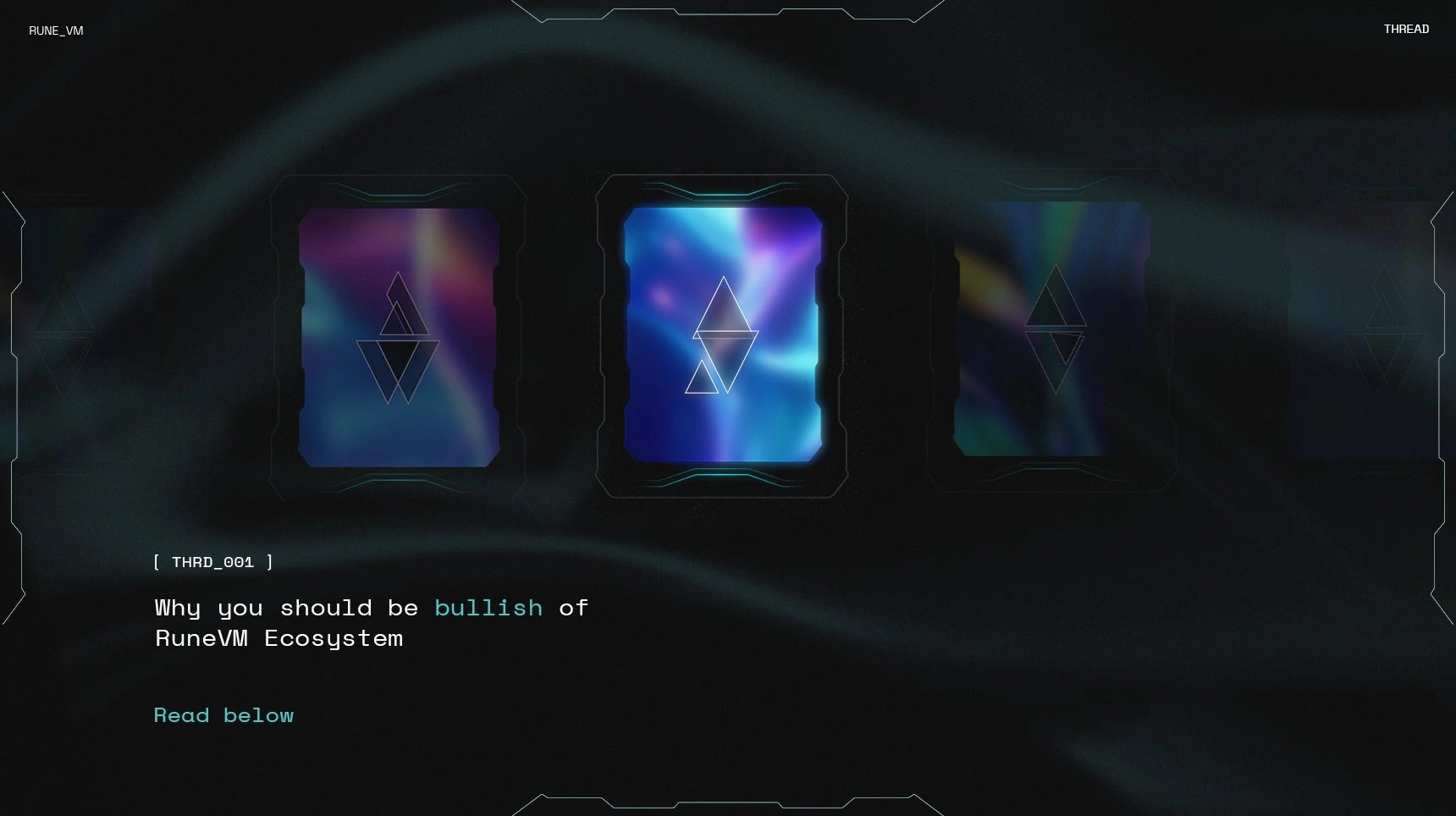RuneVM
RuneVM is a Layer 2 protocol that aims to improve Bitcoin's scalability and functionality by utilizing zkSync technology and integrating with Bitcoin Runes.[1]

Overview
RuneVM, announced in April 2024 on X (formerly Twitter), is a Layer 2 protocol that aims to address Bitcoin's challenges related to scalability, transaction throughput, and scripting limitations. By employing zkSync technology and integrating with Bitcoin Runes, it seeks to enable decentralized applications (dApps) and smart contracts.
RuneVM processes transactions off-chain to reduce network congestion, lower gas fees, and enhance scalability by utilizing Bitcoin (BTC) as gas.
Additionally, it aims to facilitate interoperability between Bitcoin and Ethereum while improving security and privacy through zkSNARKs, ensuring that transactions remain secure without disclosing sensitive information.[1][2][3]
Products
RuneVM Testnet
The RuneVM Testnet aims to provide a platform for developers and users to explore the Rune ecosystem. Users must configure a wallet in MetaMask to access the RuneVM Testnet.
They can obtain tBTC, the test token, through a Faucet by entering their wallet address.
The RuneVM bridge facilitates token transfers between the Rollup chain and Ethereum Testnet Sepolia. Users can transfer tokens from Sepolia to the RuneVM Testnet and vice versa, with a 24-hour period required to claim tokens after the transfer.[4]

Architecture
Consensus Mechanism
RuneVM employs a hybrid consensus mechanism that combines proof-of-stake (PoS) with zkRollups to facilitate efficient transaction validation and reduce energy consumption. This approach aims to select validators based on staked tokens, promoting honest behavior. zkRollups aim to aggregate transactions into a single proof for verification on the Bitcoin mainnet, enhancing throughput while alleviating network congestion.[5][10]
Virtual Machine Design
RuneVM incorporates a custom virtual machine optimized for zkSync, aiming to support a specialized smart contract language that ensures deterministic execution for consistent outcomes. This design seeks to facilitate the efficient execution of complex financial contracts.
State transitions are managed off-chain using zkRollups, with updates aggregated into a single proof for verification on the Bitcoin mainnet, thus minimizing on-chain data. A Data Availability Committee (DAC) aims to ensure that participants can verify necessary data for state transitions, enhancing security and transparency.[6][10]
Smart Contract Execution
Smart contracts on RuneVM utilize a state transition function that aims to verify transactions through zero-knowledge proofs (zkProofs) for secure execution. zkSNARKs enable validation without revealing transaction details, enhancing privacy.
The system ensures deterministic execution, aiming for consistent outcomes across transactions, and implements gas management to optimize resource allocation, with zkRollups reducing overall gas costs. Security protocols aim to ensure that only valid transactions are recorded, while smart contracts can interact with Bitcoin Runes, facilitating the development of advanced financial applications.[7][10]
Bridging Mechanics
The bridging mechanism between Bitcoin and RuneVM aims to facilitate asset transfers while maintaining a one-to-one peg. Users initiate the process by locking Bitcoin Runes on the mainnet through a smart contract, which serves as collateral for equivalent tokens minted on RuneVM.
This system allows for the minting of tokens for decentralized applications and enables users to transfer them back to the Bitcoin mainnet. The mechanism incorporates security measures through audited smart contracts and is designed to allow for potential interoperability with other blockchain networks.[8][10]
Technical Mechanisms for Interoperability
RuneVM aims to enhance the Bitcoin ecosystem through cryptographic techniques and cross-chain functionality, allowing applications to leverage Bitcoin's security alongside Ethereum's DeFi features.
Key mechanisms include cross-chain bridges, which facilitate the locking of assets and the minting of equivalent tokens; atomic swaps, which enable direct trading of assets; and oracles, which supply external data to ensure accurate transaction processing.[9][10]

Tokenomics
RuneVM Token ($RUNEVM)
$RUNEVM serves as the governance token for the RuneVM blockchain, allowing for value transfer and participation in governance. It aims to launch on the Ethereum network before transitioning to the RuneVM mainnet, facilitating a smooth process for holders.[11]
Allocation
The total supply of $RUNEVM is capped at 21,000,000 tokens, distributed as follows:
- Initial Liquidity: 70%
- Ecosystem & Incentives: 15%
- Contributors: 15%[11]
